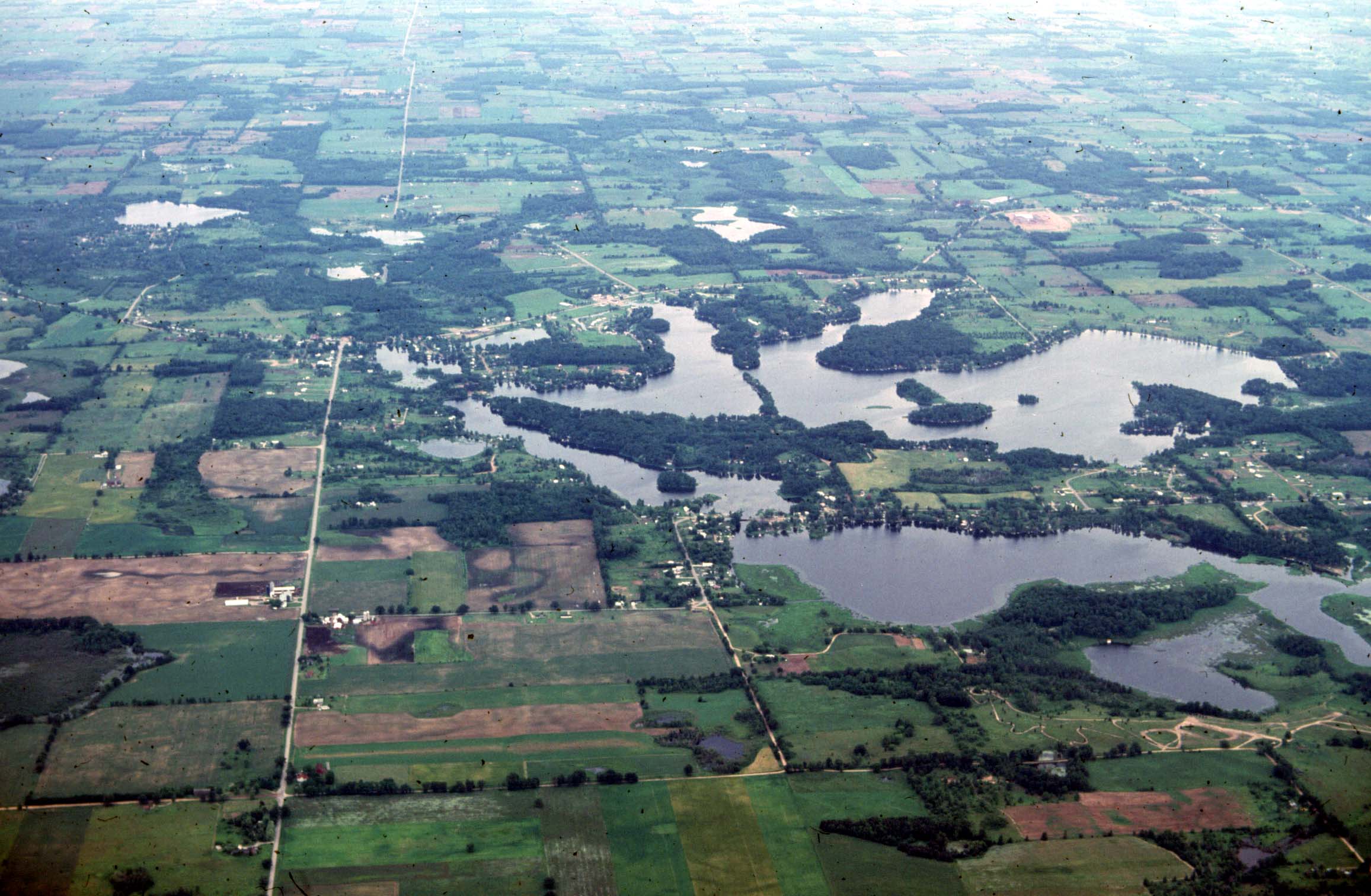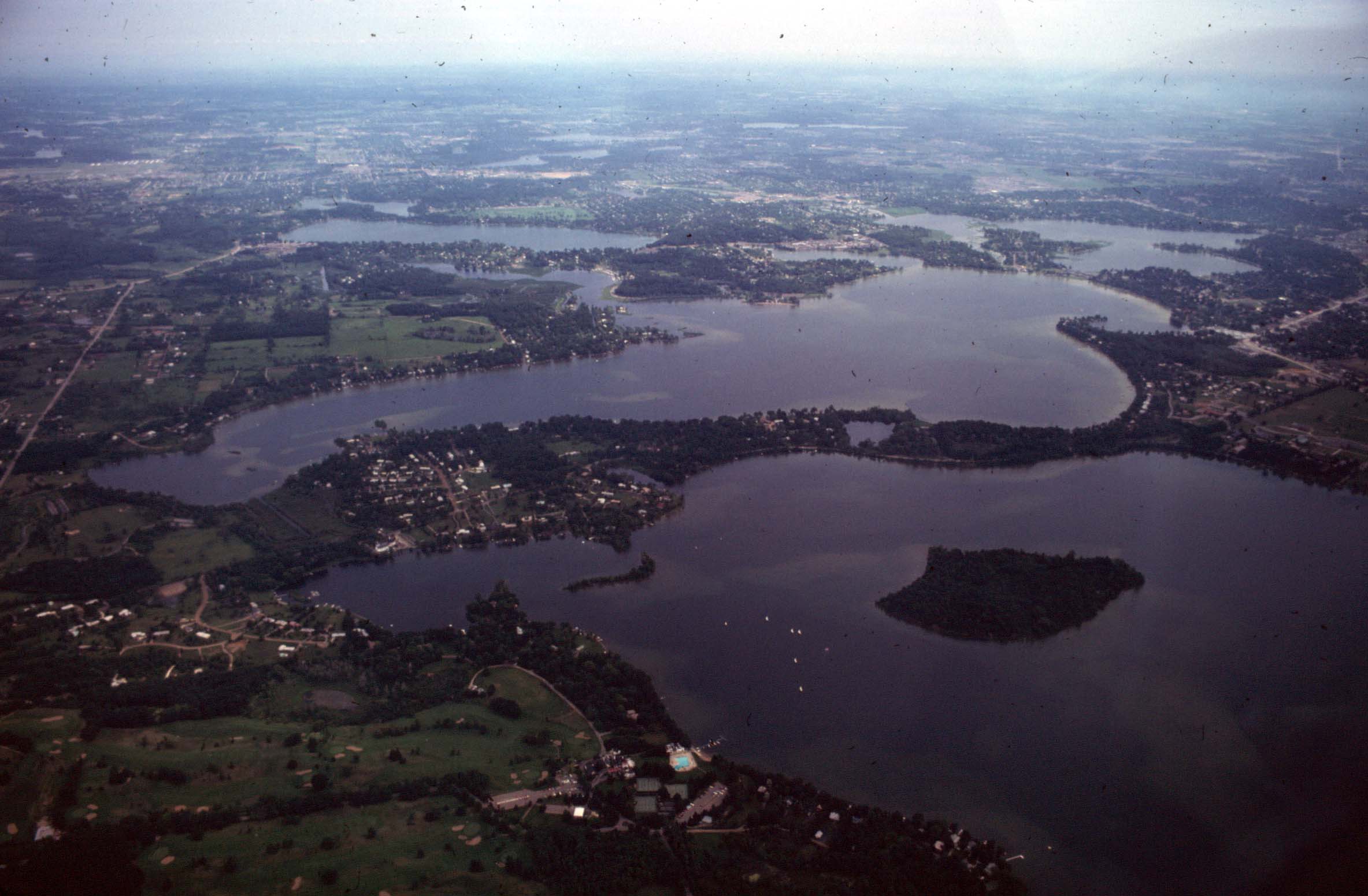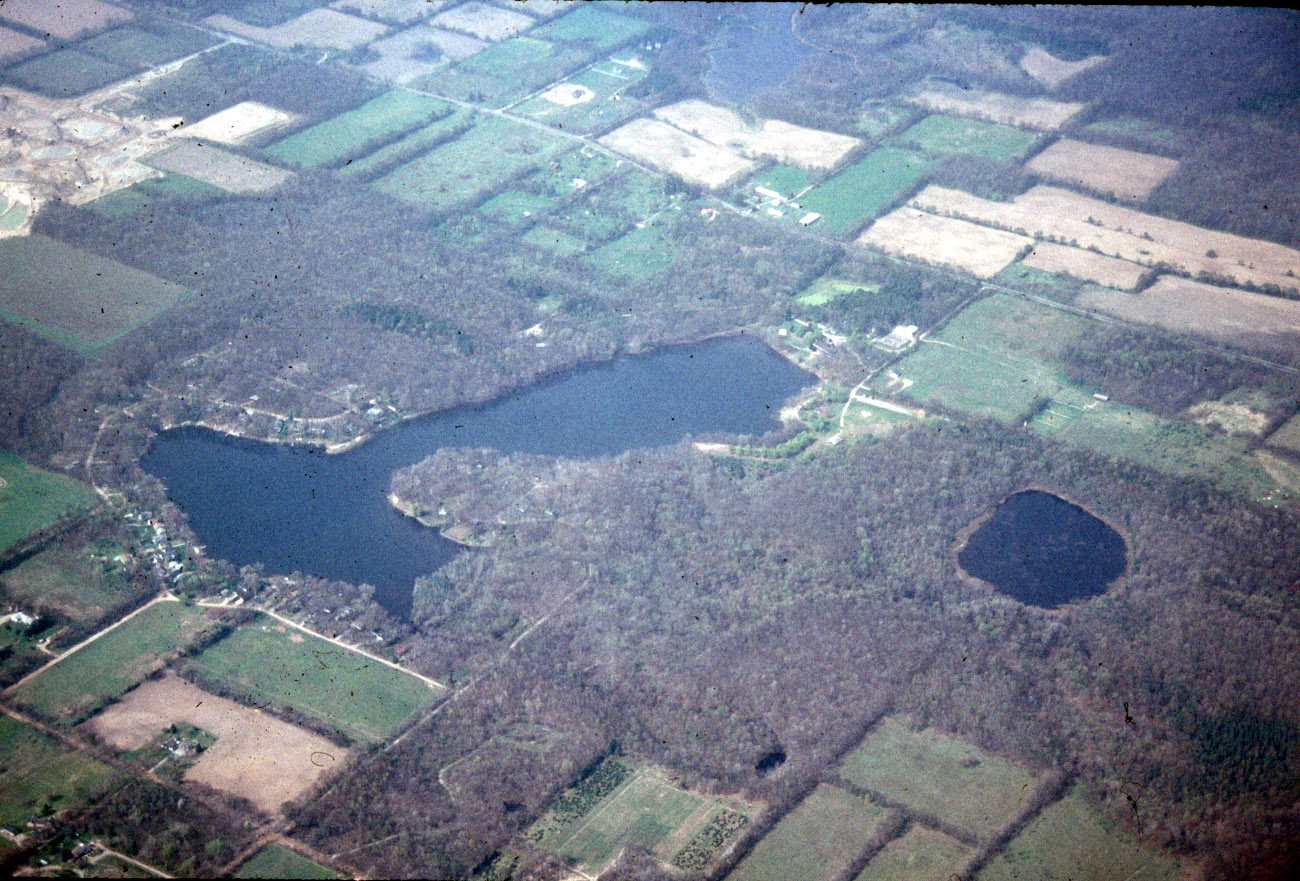KETTLE LAKES
Kettles are depressions left behind after partially-buried ice blocks melt. Many
are filled with water, and are then called "kettle lakes".
Many of our small, deep lakes in Michigan are kettle lakes. Some have since been infilled with vegetation and plant matter, to form bogs. Even some of our larger, deep lakes, like Higgins Lake and Walled Lake, are kettles. In Oakland County there is an excellent example of a glacial kettle just off Grange Hall Road between I-75 and the Dixie Highway. It's deep and steep sided. The road actually goes around it. It's still there, but now it's filled with trees and a lot more difficult to see.
Below are some examples of kettle lakes in Michigan. The "giveaway" for many of these, as to their ice block origins, lies in their crenulated outline and their undulating bathymetry.

Near Argentine, Michigan.

Near Pontiac, Michigan.

In Oakland County.
This material has been compiled for educational use
only, and may not be reproduced without permission. One copy may be
printed for personal use. Please contact Randall Schaetzl (soils@msu.edu)
for more information or permissions.